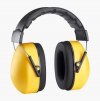Cheers, no problemo!
Yes, but with the proviso that "linearity of the transfer function" IS the correct technical explanation for what is happening in the phenomena being termed "micro dynamics."
So for example, take someone playing acoustic guitar, like Paco De Lucia:
There really ARE differences in dynamics in the notes he's playing, right? I mean, that's one of the features of performing on the guitar.
There is a constant lively flow of soft to louder strums, and even among the softer runs he's poking out various notes with more force than others.
That he is playing notes with varying force, making for different dynamics is a fact, I'm sure you agree.
THAT is an example of "micro dynamics" - as understood by most audiophiles in my experience. It's not the "blow you out of your chair" dynamic swings of an orchestra going from pianissimo to fortissimo, or a drummer moving from light brush strokes on a snare to picking up sticks and banging the set for all he's worth. It's the sense of life-like dynamics that even occur within the smaller dynamic range of say, playing an acoustic guitar. That can cue you as to the "life like" quality.
As much as Subjective Reviewers are Enemy Number One around here, and god help anyone who might endorse any term found in subjective reviews.....the phenomena above isn't some "fantasy" it's a real thing.
I've played keyboards for many years and early on there were of course "patches" on keyboards that tried to mimic various instruments - e.g. your "guitar" patch. And at one point as we know keyboards started using actual samples of guitars being plucked. But one of the things that distinguished the keyboard guitar from a real guitar was the lack of dynamic variation. Each "pluck" on a keyboard varied little from the next.
So I could transcribe everything Paco De Lucia (or some other guitar player) may play above, and even if I played every note at the same speed, it would utterly lack the dynamic realism of the real thing. It would sound dynamically flat, artificial.
Again...that references the real world phenomenon of the dynamics found in someone playing a real guitar, like the above video.
Now, given this REAL PHENOMENON that I'm describing - using the term micro dynamics - someone can come along and say "Ah, yes, that's a real phenomenon, and there is a technical way to describe what is going on there. The more technical term is "linearity of the transfer function" and HERE is how it explains the phenemon you are describing.
That's GREAT. And INSOFAR as "inearity of the transfer function" IS INDEED addressing exactly that phenemon.
Well...then...yes, the "layman" term and "linearity of the transfer function" are different ways of referring to the same phenomon. Where one realm of description can be even more precise and detailed. Wouldn't you agree?
On the other hand, if it turns out that linearity of the transfer function ISN'T exactly the technical explanation for the differing dynamics of the player, well that's ok too and we'd ask what is the more accurate technical description. But what DOESN'T seem legitimate, is to pretend the phenomenon referred to by "micro dynamics" just doesn't exist, like it's some fantasy made up by the Evil Subjective Reviewer.
I disagree. I say this because I can't remember every seeing the term "micro dynamics" by a subjective reviewer, or other audiophile, that didn't refer essentially to the phenomenon I'm describing.
Agreed. See above. I don't know if "linearity of the transfer function" describes the phenmononon referred to by "micro dynamics" but I DO KNOW that the phenemonon referred to by "micro dynamics" is quite real.
Who here could possibly doubt that there are changes in force/dynamics that occur when a musician is playing an instrument? Do you or anyone doubt that in the above video Paco isn't alternating the force and dynamics among the notes he is playing? This isn't simply a "trust my ears" thing...it's a way of referencing phenomena we all readily know to be true.
And we know that dynamics of music, both large and small, can be compressed "unrealistically" in all sorts of ways via the recording/producing process. (I can apply tons of compression in my DAW to a guitar track to reduce the dynamics to something more artificial sounding).
Then we have the question of whether one system (or speaker) may be able to produce the sense of "micro dynamics" more realistically than another.
And even then, there IS still the question of course as to whether someone is making an accurate assessment when appealing to "micro dynamics." Maybe he is being unduly influenced by other factors to think "this system produces more life like sense of micro dynamics in this guitar track."
Personally, subjectively, I find that one of the aspects that cues a "life-like" impression includes realistic micro dynamics. I very rarely hear an acoustic guitar track for instance, classical or otherwise, that doesn't sound artificially compressed vs what I hear in the presence of a real guitar (or when I play guitar).
But the original question I was answering was what was MEANT by the term "micro dynamics" and it's a real thing. If someone here has a technical explanation, that's great.







